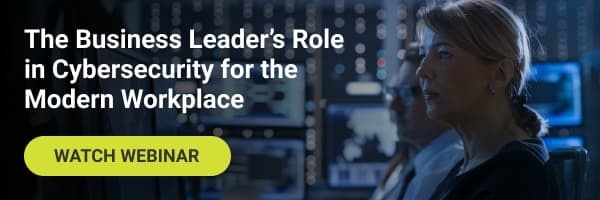With ongoing attacks and unstable political and social environments, now is the time to ensure your business is safeguarded from malicious cyber attacks. As a business leader, it is undoubtedly critical for you to take the necessary steps to keep your business safe. Over 60% of businesses go out of business within six months of a cyber attack. Don’t let this happen to you.
Download: Cybersecurity Checklist
Read the cybersecurity checklist to start getting your security strategies in place.
Cybersecurity Checklist:
- Get cyber insurance to recover from an attack financially
- Implement ongoing security awareness and phishing training for you and your employees
- Keep antimalware, computer operating system and firewalls up to date
- Be suspicious of odd emails and check the spelling of email addresses by hovering your mouse over it
- Be suspicious of links and attachments in emails. Check the spelling of links by hovering your mouse over them. Do not click on or open suspicious attachments
- Get click protection for your email systems, so if you do click on a bad link, it is less likely to hijack your computer
- Do not click on ads on a webpage or news site. Ads on these sites can look legitimate, but instead, they download malware
- Be careful what you post on social media and other publicly facing sites: address, email address, phone number, mother’s maiden name, pet’s name, birthdate, birthplace, bank account details, etc.
- Set unique complex passwords for every login. Easily track this by using a password keeper so you only need to remember one password
- Do not save store passwords on your web browser or computer other than in the password keeper
- Do not keep a company list of passwords
- Do not use public Wi-Fi. Hackers can set up a look-alike public Wi-Fi that can read all the information your computer sends through it, including keyboard strokes
- Do not use public computers. They could record your every keystroke
- Call to verify ACH payment requests the first time or if changes
- Turn on two-factor authentication to access your company's network and all web portals. That way, bad actors need more than your password to access any information
- Enforce a complex password policy. The time it takes to crack a password grows exponentially with each character added. Nine characters can be cracked in two minutes, 10 characters in two hours, 11 characters in six days, and so on
- Remove users’ local admin rights on their computers. By removing local admin rights, the risks from clicking on bad links in websites or emails are reduced because the corresponding action of downloading and executing a malicious payload is less likely to be successful
- Isolate your backups and backup appliance from your network. When a cyber attack happens, it is designed to run across the entire business network. By preventing your network from accessing your backups and backup appliance, you protect yourself in the event of an attack because you still have secured data to restore
This Is Just the Beginning
These cybersecurity basics are the first steps to getting you and your team cyberaware and cybersecure. Schedule an introductory meeting today to learn how we guide and implement IT best practices for your business’ highest safety and security.

